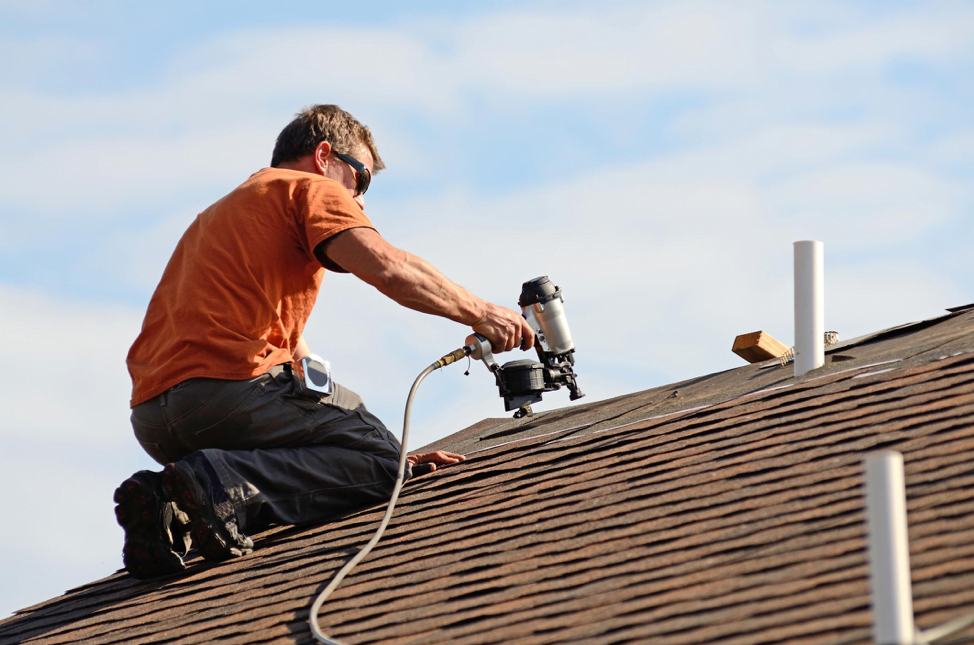Whether you are purchasing home insurance for a new property or renewing your policy on an existing home, your roof influences the cost of your premiums. Your roof has a power far beyond keeping out the cold, keeping in the heat, and ensuring that your head stays dry from rain and snow. It can cost you or save you money. That’s because an old, damaged roof drives up your insurance premiums whereas a new, energy-efficient roof can earn you a premium discount. Here are the items your insurance agent will look for in determining how your roof contributes to your home’s value and safety.
Why Your Roof Matters
The roof is your home’s first defense against bad weather. The insurance industry sees on a daily basis just how vital a sturdy roof is to home safety. In regard to hail or high-wind claims, more than 90 percent stemmed from or included a roof issue, according to the Insurance Information Institute. That’s why roofs mean so much. They’re the first line of defense against the elements.
The Institute data on homeowners’ insurance premiums put the U.S. average at about $1,132 using 2014 data. That figure has a huge range, from a low of $574 in Oregon, where little extreme weather occurs, to a high of $2,005 in the hurricane-ravaged areas of Florida. Part of the rate difference depends on location, climate, and potential perils, but your roof’s age and condition factor largely, too.
How Roof Type Affects Your Policy
The home’s roof provides its first line of protection from the elements. It protects the interior from damage that is due to storms, rodents, and insects. Roofs vary in shape, size, and materials. Your roof could be comprised of asphalt shingles, clay tile, concrete tile, metal, slate, wood, or other materials. While you might choose the roofing material based upon the home’s design, your insurance agent will consider how well it protects your home. Some materials provide better fire resistance, wind resistance, hail protection, and rot resistance, and some prove more impervious to insect damage. The insurance company considers which material best protects your home based upon the perils it regularly faces. Your roof gets a better rating for stronger materials that better stand up to damage.
Myrtle Beach House Insurance have access to many top-rated companies and can find you a competitive price to tailor your coverage to your specific needs and risks.
How Age & Condition Affect Your Policy
A new roof gets you a much better insurance rate. Newer roofs have sustained less damage, and less wear and tear means better protection.
An older roof may leak or gape. The gape could allow rodents that cause damage to get inside your structure. Insurance companies commonly require an inspection once a roof reaches a specific age. This can vary depending on the roof’s material since each material offers a different lifespan. Asphalt shingle roofs last about 20 years, so expect the insurance company to start asking for an inspection about 15 years into the roof’s age.
That leads to the condition of the roof. Before you try to obtain your insurance, you can improve your chances of receiving a good rate by inspecting the roof yourself. Call a professional if you spot any problems.
What Kinds of Roof Damage Does Insurance Cover?
Homeowners’ insurance covers many types of roofing damage. This includes shingle replacement from wind damage and leaks that develop from storm damage. Insurance will not cover damage from neglect. If the damage occurred because you neglected your roof maintenance, insurance will not cover it.
How to Use Your Roof to Lower Your Monthly Payment
Walk the perimeter of the home. Look for loose or missing roof shingles or tiles. Examine where the gutters connect to the fascia and roof. Missing siding near the roof or loose or torn away gutters can create problems. Any area with a gutter problem means you need a ladder to look at the roofing above the gutter.
The home’s gutter system quickly diverts water away from the roof and siding and redirects it into the yard, a suitable distance from the home’s foundation. Anywhere a gutter problem exists signals a spot where this diversion has not been occurring. The roof may have sustained damage in that area.
Look for worn or patchy areas of missing roofing materials. Also, examine the roof for a buildup of debris and twigs or branches. Remove any debris. In the attic, examine the interior for signs of leaks or drafts. If you can feel air coming in from outside in your attic, a roofing or fascia problem exists.
Call a professional roofer as soon as you spot a problem. You can have this expert repair these items before you approach the insurance company for your new coverage or rate. If you’re buying the home, you can include these roofing issues in the list of items that the seller must repair before you purchase it.
The better your roof fits the existing perils that the home faces, the better your discount on your home insurance.









Hello, you used to write great, but the last few posts have been kinda boring?I miss your super writings. Past few posts are just a little out of track! come on!
I have been examinating out a few of your stories and it’s clever stuff. I will surely bookmark your website.